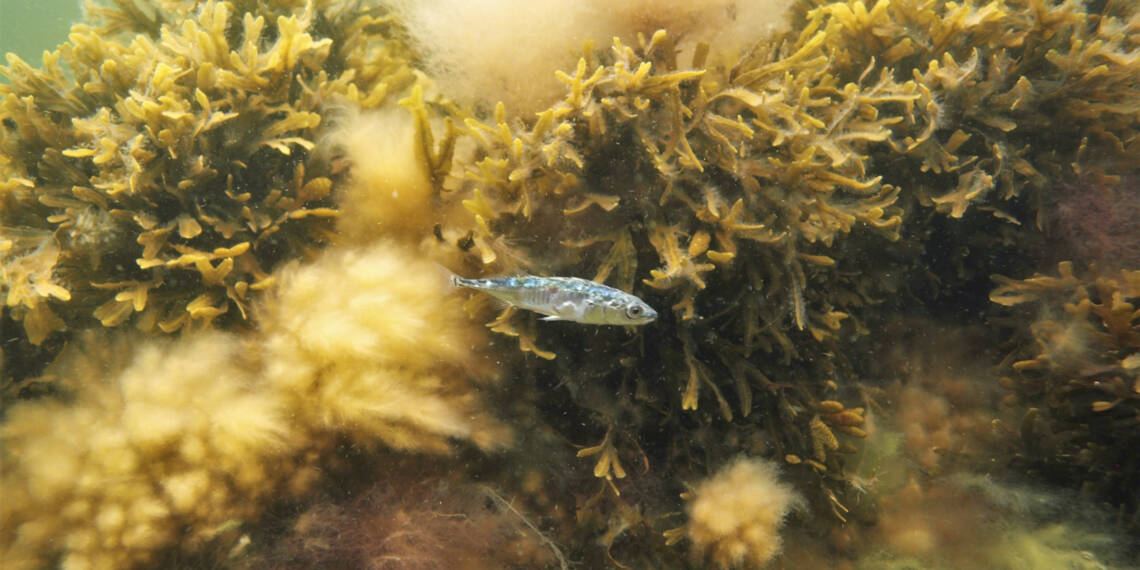
Eutrophication affects everything
Eutrophication affects the entire ecosystem. It increases the amount of plankton algae and causes water turbidity. Habitats and their species change, which reflects on the functioning of the marine food web.
Eutrophication has had to be monitored in the Baltic Sea for decades, and many of its signs have become familiar: Algal blooms have become more common, waters have become turbid, and bladderwrack beds important for fish fry have been replaced by filamentous algae growths. Marine research provides more detailed information on how eutrophication has progressed and what effects it has on marine nature.
Eutrophication increases amount of plankton
One of the most visible consequences of eutrophication is the proliferation of phytoplankton. In a nutrient-rich sea, both microscopic plankton algae and cyanobacteria, which also belong to phytoplankton, thrive. Eutrophication particularly favors certain phytoplankton species, such as cyanobacteria.
The amount of phytoplankton can be monitored by measuring the concentration of chlorophyll a in the water. This chlorophyll is present in all photosynthetic organisms – including plankton algae – and its amount indicates the abundance of phytoplankton.
The chlorophyll concentration in the waters of the Baltic Sea has increased in all Finnish marine areas since the 1970s. Although the growth stopped in the 2000s and even turned into a decline in the Eastern Gulf of Finland, no Finnish marine area has yet achieved a good status in terms of chlorophyll concentration.
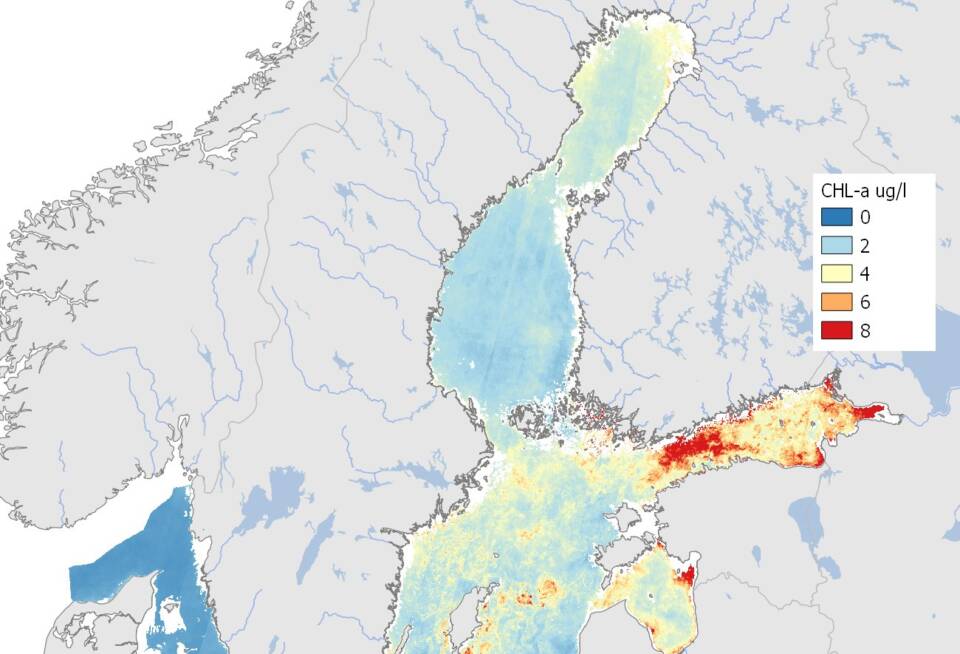
The water is more turbid than before
The proliferation of phytoplankton increases water turbidity. Of course, other factors also affect water clarity, such as silt particles brought by rivers and humus that colors the water.
In Finland’s open sea areas, visibility depth has significantly decreased over the past hundred years. In the Bothnian Bay and the Bothnian Sea, water turbidity has stabilized in the 2000s, but in the Gulf of Finland and the Northern Baltic Sea, the decline in visibility depth has continued. So far, all marine areas are in poor condition in terms of visibility depth.
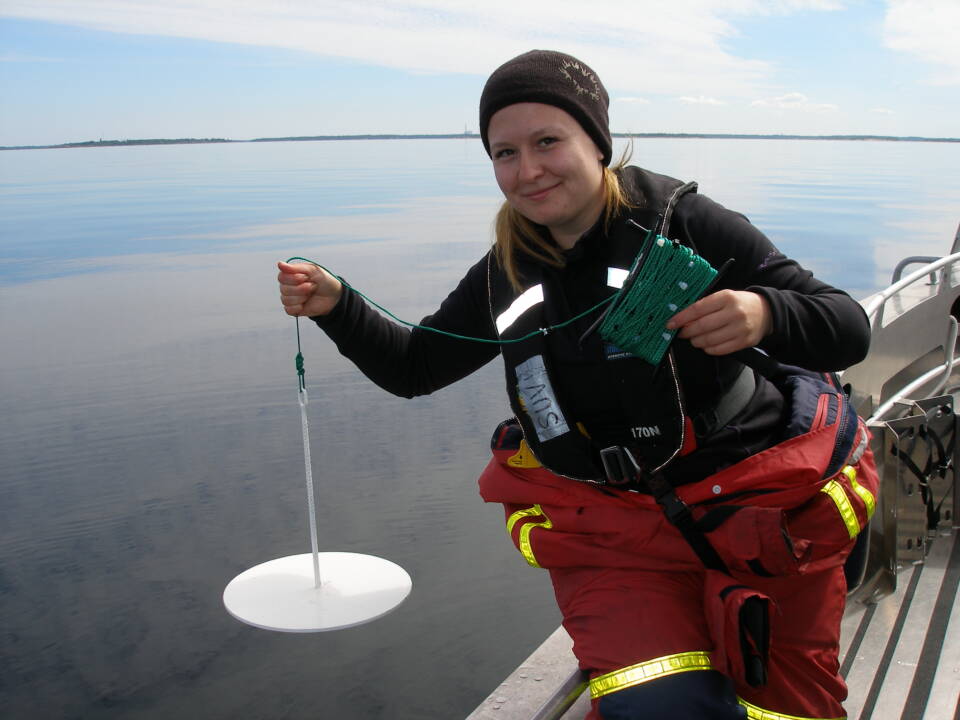
Cyanobacteria and filamentous algae are becoming more common
Mass occurrences of cyanobacteria, also known as cyanobacterial blooms, are characteristic of eutrophic seas. Cyanobacterial blooms occur especially in the southern and southwestern marine areas of Finland, and their number and extent have increased since the 1990s. However, annual variations are significant because, in addition to nutrients, also weather conditions affect cyanobacterial blooms. The most intense cyanobacterial blooms occur during warm and sunny summers and are most often observed in calm weather when cyanobacteria rise to the surface.
As the nutrient content of the water increases, thick mats of filamentous algae proliferate along the shores, and the rocky seabed becomes slimy. Bladderwrack and eelgrass, which live deeper, suffer from a lack of light because epiphytic algae cover their surfaces and the water is turbid. As the amount of bladderwrack and eelgrass decreases, the diverse species living among them also diminish.
On eutrophic soft-bottom shores, common reed spreads. Its spread is also aided by the fact that cows and sheep no longer graze on the shores. Common reed stands displace other species, thus reducing the biodiversity of the coastal environment.
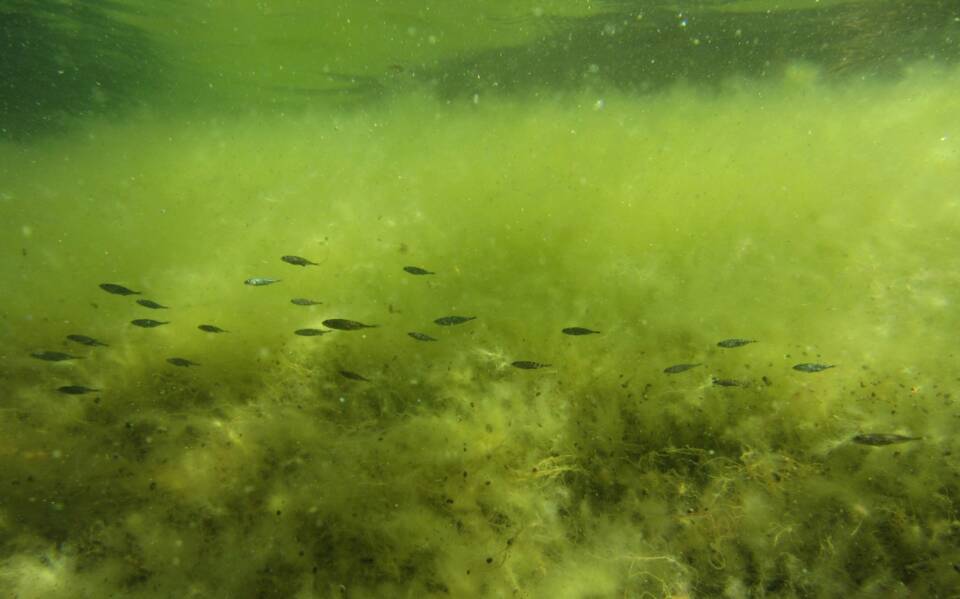
Eutrophication changes the food web
The food web describes how different species are interconnected. It also shows how matter and energy move within the ecosystem.
At the lowest level of the food web are primary producers, such as phytoplankton and larger algae and aquatic plants growing along the shores. They photosynthesize and thus form the foundation of the entire food web. A phytoplankton community rich in high-quality nutritional algae produces quality zooplankton food for fish and enables a favorable fish population.
As the sea becomes eutrophic, the amount of phytoplankton increases, which also leads to an increase in zooplankton. However, eutrophication also changes the species composition of phytoplankton. This means that zooplankton have access to lower-quality food than before. Consequently, smaller species such as ciliates, rotifers, and small water fleas increase in zooplankton. As a result, a large portion of the phytoplankton remains uneaten and sinks to the bottom.

Decomposition activity accelerates at the bottom, consuming the oxygen reserves. Bottom-dwelling animals disappear from anoxic bottoms. Phosphate nutrients are also released from anoxic bottoms and re-enter the cycle. This is called internal loading.
The reduction in zooplankton size and increased water turbidity are reflected in fish populations. Cyprinids proliferate because their fry find food in turbid water better than other fish species. Pikeperch also benefits from eutrophication. Pike and perch, on the other hand, suffer. They find it harder to hunt in turbid water. Eutrophication also negatively affects flounder living on the bottom.
-
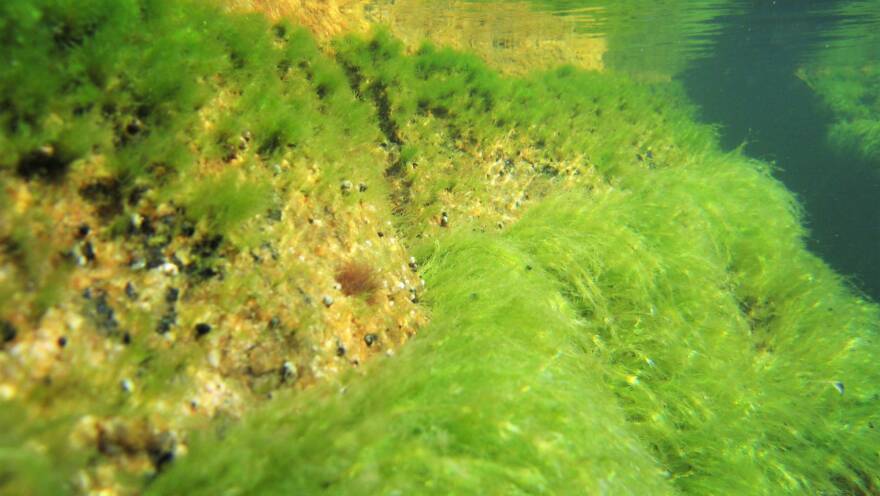 Find out more
Find out moreGreen algae
-
 Find out more
Find out moreTurbidity

